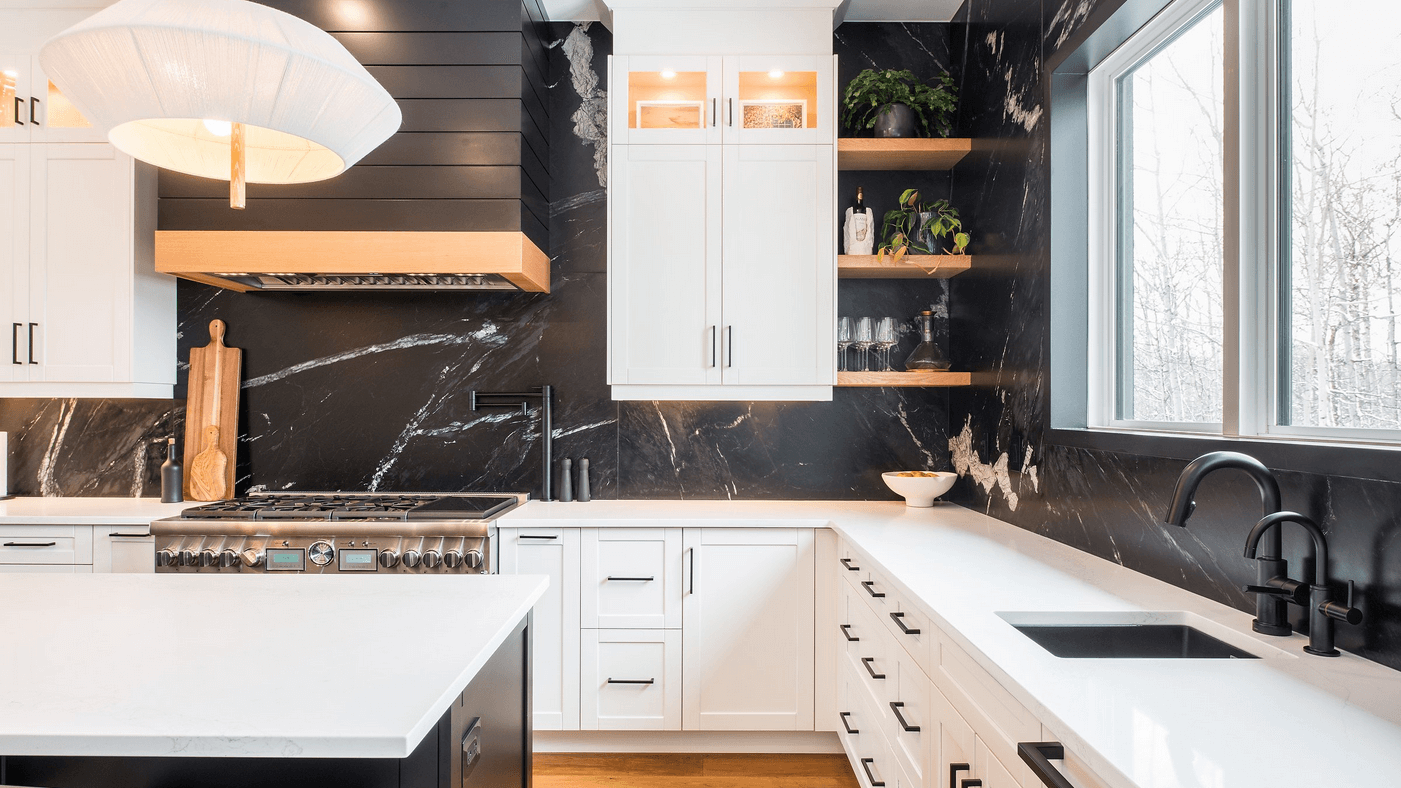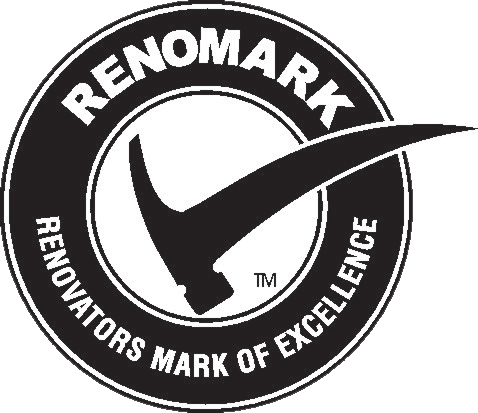The kitchen is often referred to as the heart of the home, and for good reason. It's where meals are prepared, family memories are made, and daily routines are seamlessly carried out. A well‑designed kitchen can drastically simplify these everyday tasks, providing not just efficiency but also joy and comfort in your home.
Modern homeowners and buyers are increasingly drawn to kitchens that blend functionality with style. Whether it’s clever storage solutions, high-quality appliances, or smart technology, certain upgrades make life easier while also creating strong appeal for potential buyers.
This guide will explore the top kitchen improvements that not only enhance usability but also deliver an impressive return on investment. If you're considering a kitchen upgrade, read on to discover how to maximize both convenience and value.
How Upgrading Your Kitchen Boosts Resale Value
Investing in kitchen upgrades is one of the most effective ways to increase the resale value of your home. Kitchens are often considered the heart of a home, and prospective buyers tend to place significant importance on their design and functionality. An updated kitchen signals to buyers that the home has been well-maintained and modernized, which can make your property stand out in a competitive market. High-quality finishes, energy-efficient appliances, and an optimized layout not only enhance day-to-day living but also attract higher offers from buyers willing to pay a premium for move-in-ready spaces. Additionally, kitchen renovations can recoup a considerable percentage of their cost, making them a smart, value-driven investment.
Optimizing Layout & Workflow
One of the most effective ways to enhance both the functionality and appeal of a kitchen is by optimizing its layout. A well-designed kitchen layout not only makes daily tasks easier but also improves the overall spatial flow and aesthetics.
Work Triangle Principles: Ensuring the stove, sink, and refrigerator are positioned in a triangular pattern minimizes unnecessary steps and streamlines movement during meal preparation. This classic principle enhances efficiency and reduces time spent navigating the kitchen.
Adding or Reconfiguring Islands/Peninsulas: Incorporating an island or peninsula provides additional prep space, seating options, and storage solutions. Whether used for cooking, dining, or socializing, these features make kitchens far more versatile and functional.
Open-Concept Integration: Removing barriers or walls to integrate the kitchen with adjoining living and dining areas creates sightlines that encourage social cooking. This open concept not only fosters interaction but also gives the kitchen a spacious and welcoming feel.
Maximizing Storage & Organization
Keeping a kitchen organized and clutter-free is essential to maintaining both its functionality and aesthetic appeal. Maximizing storage and implementing smart organizational solutions can help make even the smallest kitchens efficient and easy to use. This section will explore creative ways to make the most of available space, from innovative storage systems to simple organization tips that enhance daily kitchen use.
Pull-Out Pantries & Roll-Out Shelves: These innovative storage solutions ensure full visibility and easy access to goods, making it effortless to locate and retrieve items while keeping everything neatly organized.
Deep Drawers with Custom Inserts: Ideal for storing pots, pans, utensils, and bakeware, deep drawers with tailored dividers help maintain a tidy and efficient kitchen space.
Corner Solutions: Features like lazy Susans and swing-out units effectively utilize corner spaces, eliminating dead zones and maximizing available storage.
Vertical Storage: Options such as magnetic knife rails, hanging pot racks, and spice drawers make clever use of vertical space, keeping essential tools within reach while maintaining a clean and organized aesthetic.
Durable, Low-Maintenance Surfaces
When designing a functional and aesthetically pleasing kitchen, selecting the right surfaces is crucial. Durable, low-maintenance materials not only enhance the overall look of the space but also ensure that it can withstand daily wear and tear. This section explores key surface options that combine resilience with style, making them ideal for a practical and long-lasting kitchen.
Quartz Countertops: Quartz countertops are a popular choice for modern kitchens due to their durability and ease of maintenance. They are highly scratch-resistant, non-porous, and simple to clean, making them ideal for busy households. Unlike natural stone, quartz does not require sealing, offering both convenience and long-lasting performance.
Granite vs. Solid Surface: When it comes to countertop choices, granite and solid surface materials both have their pros and cons. Granite, being a natural stone, provides a unique and luxurious appearance but requires periodic sealing and careful cleaning. Solid surface materials, on the other hand, are more affordable, seamless, and low-maintenance, though they may lack the elegance and resale appeal of granite.
Impact-Resistant Backsplashes: For a kitchen that combines style with practicality, impact-resistant backsplashes are essential. Options like ceramic or glass tiles not only offer eye-catching designs but also allow for quick and easy wipe-downs, keeping the kitchen clean and hygienic. Stainless steel backsplashes are another durable option, providing a sleek, modern look that resists stains and scratches while standing up to daily wear and tear.
Layered & Task-Focused Lighting
Creating a functional and inviting kitchen space starts with a well-thought-out lighting design. Layered and task-focused lighting ensures every area of the kitchen is both practical and visually appealing.
Ambient Lighting: Use recessed can lights or track lighting to provide overall illumination, ensuring the entire kitchen is evenly lit.
Pendant & Accent Fixtures: Add style and personality by placing pendant lights over kitchen islands or accent fixtures in eat-in areas, creating a statement while adding focused lighting.
Dimmers & Daylight Bulbs: Incorporate dimmer switches and daylight bulbs to adjust brightness levels and mimic the warmth of natural light, giving the kitchen a versatile ambiance for various times of day and activities.
Resilient, Easy‑Care Flooring
When selecting flooring for your kitchen, it’s essential to choose materials that combine durability with easy maintenance. The kitchen is a high-traffic area prone to spills, stains, and daily wear, making resilient and easy-care flooring a practical and stylish choice. This section explores the best flooring options to stand up to the demands of a busy household while enhancing the overall design of your space.
Luxury Vinyl Plank & Waterproof Laminate: Achieve the look of natural wood with the added benefits of spill resistance and durability, making these options perfect for busy kitchens.
Porcelain or Ceramic Tiles: Opt for hard‑wearing tiles with quick‑dry grout options to handle high-traffic areas and ensure easy cleanup.
Maintenance‑Free Finishes: Select materials requiring minimal sealing or polishing, providing a long-lasting and hassle-free surface for everyday use.
Finishing Touches & Timeless Hardware
When designing your dream kitchen, it’s the small details that make the biggest impact. From cabinet styles to hardware finishes, these finishing touches can elevate your space and create a timeless look.
Cabinet Door Styles: Choose from shaker, flat-panel, or transitional designs for a versatile and broad appeal that complements both traditional and modern kitchens.
Neutral Cabinet Colours: Opt for timeless shades such as whites, grays, and soft greiges, which effortlessly harmonize with any décor style.
Quality Knobs & Pulls: Invest in solid-metal hardware finishes like brushed nickel, matte black, or polished chrome to ensure durability and withstand frequent use.
Open Shelving & Glass Fronts: Incorporate open shelving or glass-front cabinets to showcase favourite dishware, decorative items, and add a sense of depth and openness to your kitchen space.
Common Pitfalls & How to Avoid Them
When designing or upgrading your kitchen, it's vital to consider potential pitfalls and how to effectively prevent them. Here are some common challenges you may encounter and strategies to address them:
Compatibility Issues
To avoid headaches down the line, ensure that all appliances, fixtures, and systems you select are compatible with one another. Look for standardized connection options and avoid relying on proprietary technologies that may limit future replacements or upgrades. Cross-brand support is critical for flexibility and seamless integration.
Maintenance & Longevity
Plan to maximize the lifespan of your kitchen materials and appliances. Opt for products that offer long-term support, including the availability of replacement parts and reliable customer service. Scheduling regular maintenance and staying on top of software updates for smart devices can help prevent costly repairs and ensure your kitchen remains functional and efficient for years to come.
Prioritizing Aesthetics Over Functionality
While aesthetics are important, prioritizing style over practicality can lead to a less user-friendly kitchen. Avoid this by focusing on ergonomic designs, durable materials, and a layout that enhances workflow, such as the classic kitchen work triangle.
Choosing Low-Quality Materials
Opting for cheaper, low-quality materials to cut costs may result in frequent repairs or replacements. Invest in durable, long-lasting materials for countertops, cabinetry, and flooring, as they offer better value over time.
Ignoring Ventilation
Poor ventilation can lead to lingering odours, grease buildup, and an uncomfortable cooking environment. Avoid this by installing an efficient range hood and ensuring your kitchen has adequate airflow for a fresh and clean atmosphere.
Professional vs. DIY
When it comes to kitchen renovations, deciding between hiring a professional and undertaking a DIY approach can significantly impact the outcome. Careful assessment of your skills, time availability, and the scope of your project is essential to make the right choice. While small updates like painting walls or swapping hardware can be tackled by most DIY enthusiasts, larger, more complex tasks may require professional expertise to ensure safety and quality.
Assessing Your Kitchen’s Readiness
Before beginning any kitchen renovation, it's vital to evaluate the current state of your kitchen. Key considerations should include wiring, plumbing, and structural needs. Outdated electrical systems or old plumbing may require upgrades to support modern appliances and fixtures. Additionally, assess whether your walls or flooring can handle new installations without reinforcement—such preparation lays the foundation for a smooth renovation process.
When to Hire a Pro
For intricate tasks such as gas line installations, custom cabinetry fit-outs, or complex electrical work, hiring a professional ensures the job is done safely and efficiently. Pros bring invaluable experience that guarantees a polished and functional outcome while maintaining compliance with building codes and safety standards. Attempting these advanced projects without proper knowledge can result in costly mistakes and potential hazards.
Permitting Basics in Alberta
Understanding local regulations is crucial for any kitchen renovation. Permits are often required for structural changes, significant plumbing or electrical work, and alterations to gas lines. Residents of Alberta should familiarize themselves with permitting requirements to ensure their project meets municipal guidelines. Additionally, inspections may be necessary to confirm compliance, so contacting your local authority beforehand can save time and prevent potential setbacks.
Conclusion
Undertaking a kitchen renovation can be an exciting yet complex process, involving multiple steps to ensure success. Carefully planning your project is essential, from setting a clear budget to choosing the right materials and appliances that align with your vision. It's also important to adhere to local regulations and building codes, as well as obtain any necessary permits, to avoid legal setbacks or delays. Collaborating with experienced contractors or designers can provide valuable insights and help streamline the process. Whether you're updating the space for improved functionality, enhanced aesthetics, or both, being well-informed and prepared will allow you to create a kitchen that not only meets your needs but also adds significant value to your home. A thoughtful renovation can transform your kitchen into a space that’s both beautiful and practical for years to come.
Ready to Transform Your Kitchen? When it’s time to turn inspiration into reality, contact Diamond Contracting. From space planning and guidance to meticulous craftsmanship and final walkthrough, our team will deliver a kitchen that simplifies your daily routine and maximizes your home’s market value.
















